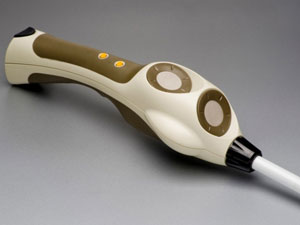UltraCane
This device is a traditional long white cane with the addition of a component that provides haptic feedback for obstacles. The device alerts users to both the proximity and direction of the obstacle. Here’s a review of the product from SITE.
Interestingly, the same company has developed a device that can be attached to a bike to provide identification of obstacles intended to be used on cycling tracks.
To learn about the history and development of the white cane, click here. |  |